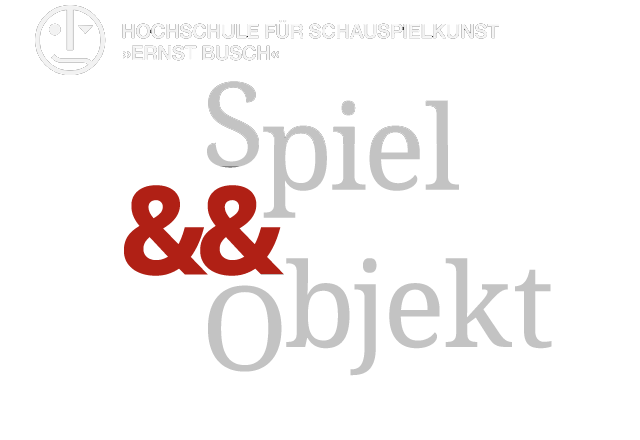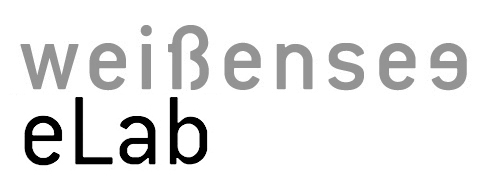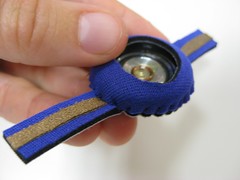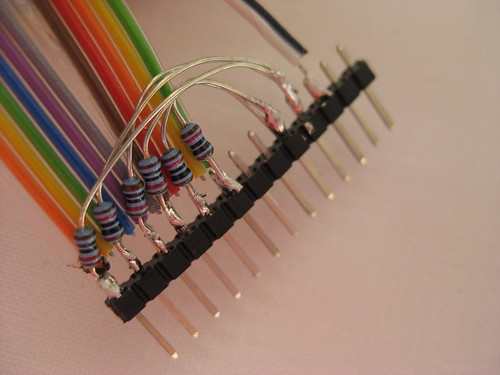Wearable sound experiment

16-17 May 2009 V2_ Institute for the Unstable Media Rotterdam, The Netherlands We provide participants with: Hackable sound devices and programmable controllers, DIY fabric sensors, conductive fabrics and threads, lots of stretchy fabric, thread and sewing machines…
Interactive Solar T-Shirt
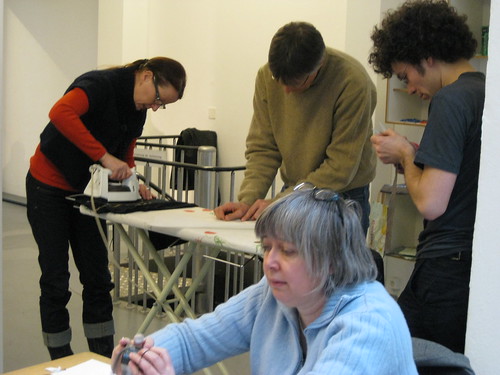
1 February 2009 Plug.in Basel, Switzerland This workshop aims to be an introduction into soft fabric electronic circuits and a DIY concept of wearable technology. Both in our own projects and in workshops we choose to introduce affordable, available, off-the-shelf materials, basic techniques and detailed instructions, so that workshop participants can continue to develop their […]
Piano T-Shirt
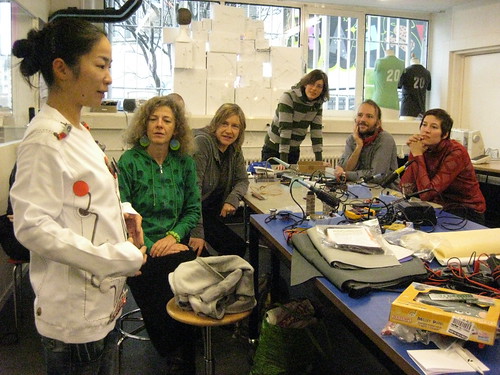
5-6 December 2008 DIY Art and Technology Festival Zurich, Switzerland This workshop aims to be a short introduction into simple soft fabric electronic circuits. The materials used are cheap and off the shelf, so that the practice introduced in the workshop can be continued at home. Sewing, soldering and experimenting with materials is not hard […]
Game controller hack
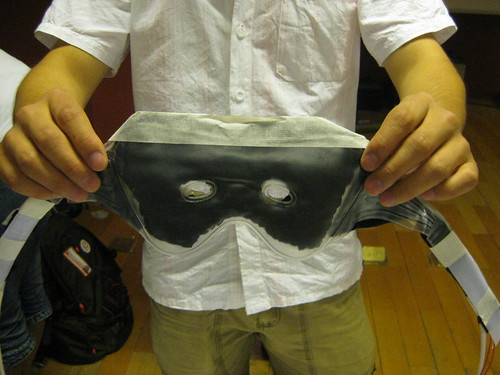
also: Massage me: How to get what you want This workshop references the motivations behind creating Massage me. We wanted a free massage, so we decided to modify an existing scenario for our benefit. Participants are encouraged to consider alternative interaction scenarios concerning console gaming and must think about how different, and possibly soft input […]
Sewing Fabric Sensors
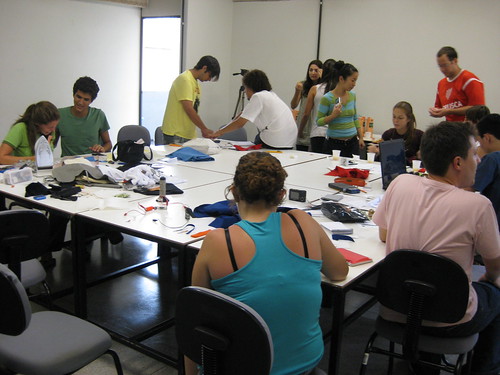
This workshop gives a basic overview of how to get analog output from fabric pressure and bend sensors into the computer.
stretchy cable
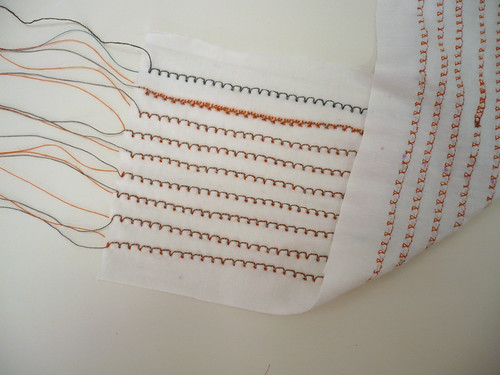
Using stretch stitch on sewing machine, you can create stretchy fabric cable. The picture shows 9 line stretchy fabric cable, which resistance is 150 ohm/m.
Wearable Waste of Energy

Sew together various soft electronic components to turn your favorite clothing item into a wearable waste of energy!
Wearable Sound Experiment
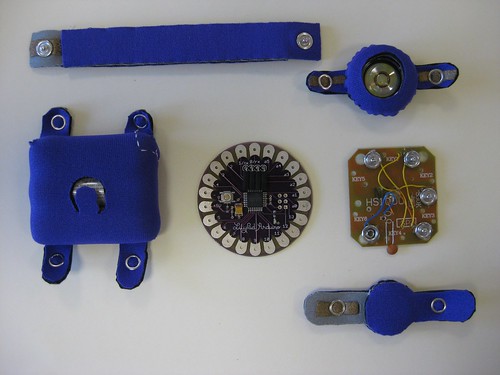
Produced as an example for a workshop, this sleeve combines a range of fabric components.
Wearable Toy Piano
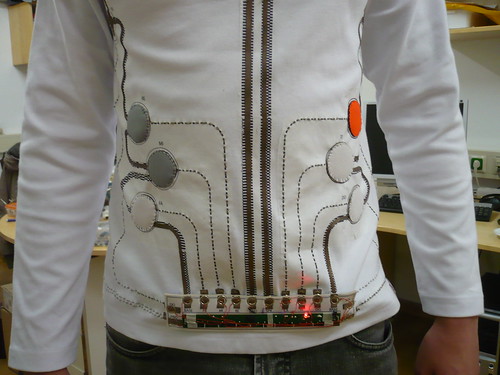
A Toy Piano embedded on a T-shirt. It has 8 keys from Do to Do (1 octave). You can play simple music by wearing the shirt and pushing the fabric button on the shirt. All the components from the toy piano (batteries, speaker, circuit board) are placed on the shirt and connected with poppers. All […]
Battery 101
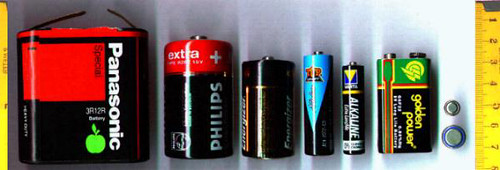
Here are some basic data (size, capacity) of various chargeable, non-chargeable batteries.
Solar T-Shirt
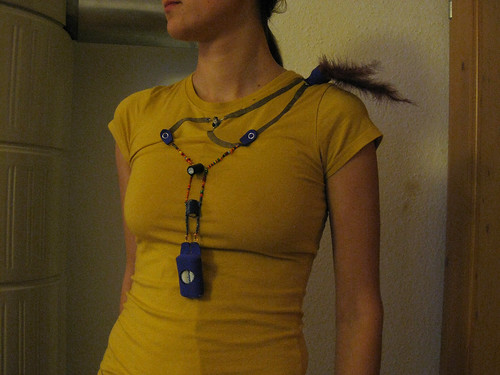
Neck-stroking wearable for sunny days. The components for this solar driven circuit are integrated in this decorative t-shirt, exploring the possibilities of textile electronics and interaction with the sun.
Piano T-Shirt
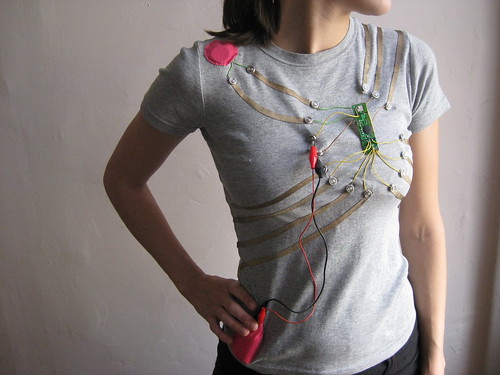
As an example for an electronic textiles workshop this t-shirt interfaces with a toy piano, allowing for people to play music on my back. Fabric Buttons replace the keys, poppers connect to the circuit so that it can be connected and disconnected from the t-shirt. This allows for all of the components on the t-shirt […]
Isolating Traces
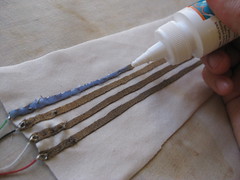
In most applications it is important to isolate the conductive traces. For stretchy traces this requires a stretchy isolation. So far we have experimented and had good results with: stretchy fabric glue, puffy fabric paint and extra layers of fabric.
Stretchy Traces

Stretchy conductive traces are great for wearables because their stretchiness makes these traces comfortable and durable against wear and strain.
Solar Powered Motor Circuit

This circuit was inspired by the Overheadbots. The circuit harvests the energy from a 0,5V 100mA solar cell, storing it in capacitors and then releasing it to drive a motor. This circuit was used in the Solar T-Shirt example project.
Xbee
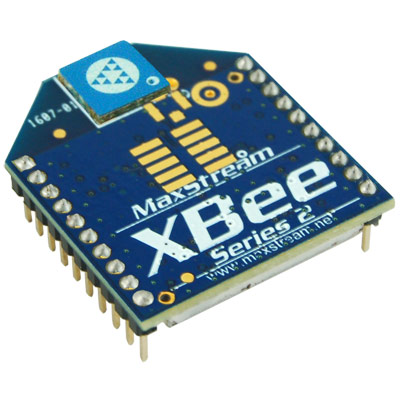
Xbee is a wireless communication device from digi.com that uses ZigBee protocol. “ZigBee is a specification for a suite of high level communication protocols using small, low-power digital radios based on the IEEE 802.15.4-2003 standard for wireless personal area networks (WPANs), such as wireless headphones connecting with cell phones via short-range radio. The technology defined by the ZigBee specification is intended to be simpler and less expensive than other WPANs, such […]
Flux
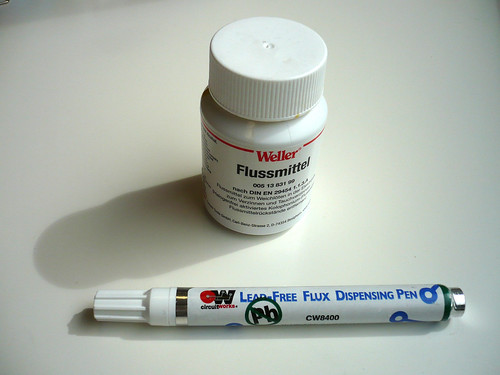
Flux is “a chemical cleaning agent which facilitates soldering, brazing, and welding by removing oxidation from the metals to be joined.” and additionally, it “allows solder to flow easily on the working piece rather than forming beads as it would otherwise.” (wikipedia) So, my problem of solder getting crumbly and not dropping onto the fabric […]
Arduino Overview
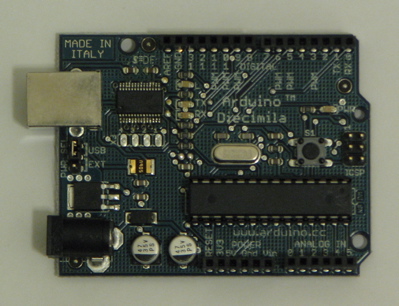
Arduino >> http://www.arduino.cc/ There are nice comparison on various Arduino on Arduino.cc site. USB : Diecimila “The Arduino Diecimila is a microcontroller board based on the ATmega168 (datasheet). It has 14 digital input/output pins (of which 6 can be used as PWM outputs), 6 analog inputs, a 16 MHz crystal oscillator, a USB connection, a power jack, an ICSP […]
Circular Knitting Machines
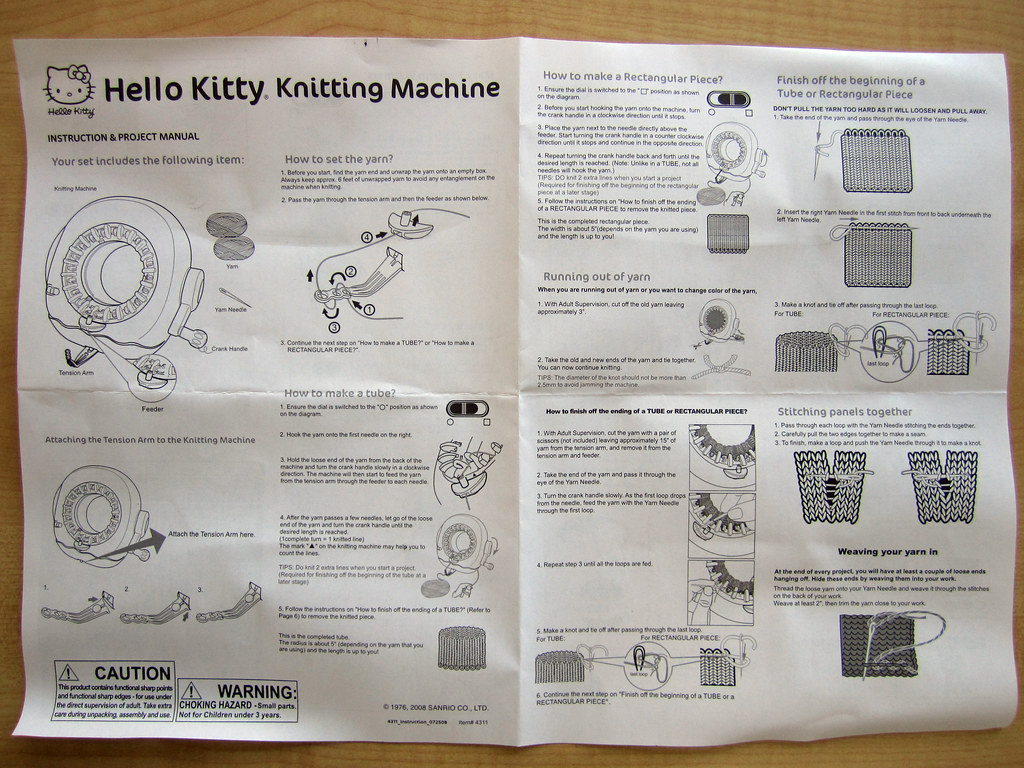
also: knitting nancy, knitting machine, German: Strickmühle also see: circular sock knitting machine These machines are amazingly easy to use. I bought myself a barbie Knitting machine via Amazon UK because it was cheaper than the more professional looking ones. It works fine for the circular knit but is very messy at the edges when […]
Flux Test
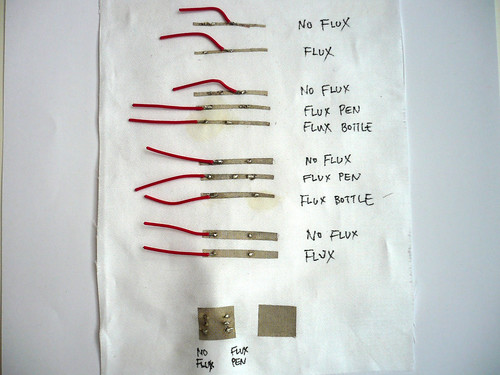
I had hard time soldering DIP pin legs to conductive fabric. It becomes always crumbly and does not stick to the fabric good. (Also I am using lead free solder, that makes it look crumbly too)
Vinylcut Copper & Fabric PCB
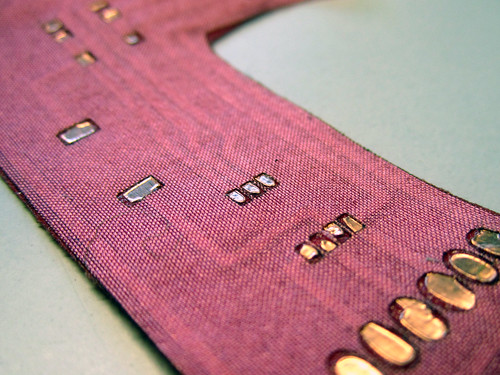
Using a vinyl cutter to cut the traces of a circuit design out of copper foil with adhesive backing. The copper traces can then be transferred to a base to make a flexible circuit. Additionally a solder mask can be lasercut (or also vinylcut) from fabric with adhesive backing and applied to isolate the traces […]
RGB Colour Fade

The following Arduino code lets you input two RGB colours and then automatically fades from the first to the second. The following video shows the effects of this code.
Visualization: 2×2 Matrix
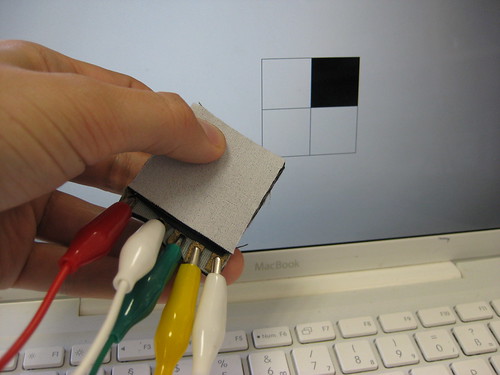
This code is great for visualizing pressure sensor matrices using a grid of squares that are filled with gray-scale values from 0-255, corresponding to the pressure sensor value.
Visualization: Graph

In many of our textile sensor videos and examples we use an arduino programmed to read analog sensor values and send them over serial to a computer running a visualization written in processing. We have taken our code from the following examples:
Conductive Pen
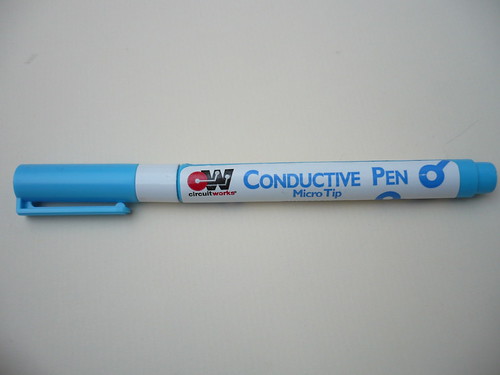
Conductive pens are intended for small fixes and can be used to connect conductive fabric that is not solderable to the metal pins of a components. But we have found them to be finicky and a slight pain. Instead we recommend the range of conductive paints and inks listed in this post: >> Conductive Paints […]
Circuit Sewing Tips
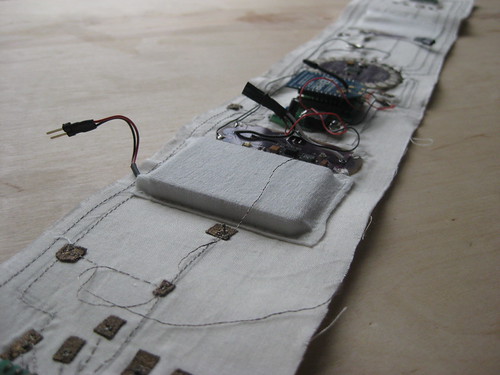
You can make a whole circuit using conductive thread and fabric. Here is some tips, DOs and DONT DOs.. that are learned from many mistakes we made in our past trials.
Anti-static Foam

also: Resistive foam, ESD foam, black conductive polyurethane foam, dissipative foam Comes with sensitive electronic chips and components. Available in various densities, soft or stiff. Good for pressure sensing.
Resistive Paper

Black conductive paper used for electrostatic field mapping. >> http://store.pasco.com/pascostore/showdetl.cfm?&DID=9&Product_ID=1821&Detail=1
Metal Fasteners

Many traditional fabric fasteners are metal and great for making electrical plugable connections. these include hooks and loops, hook clasp, magnetic clasps and screw and socket clasps, buttons, zippers (with conductive zipper tape from Shieldex)… These also include metal poppers, which are covered in an extra post.
Foam

Great for use in fabric buttons. Used inside the Massage me jackets to make fabric switches, using a hole making tool to make evenly spaced holes, allowing the conductive layers on either side of the foam to make contact.
Resistive and Piezoresistive Fabrics
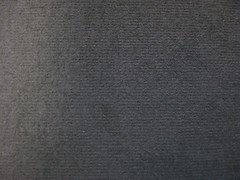
Resistive fabrics tend to have an increasing resistance across distance and are great for making potentiometers and location sensors. Piezoresistive fabrics are often also resistive across distance (x,y) but have a resistance that decreases under pressure (mechanical stress) through the material (z). These materials are great for making pressure, bend and often stretch sensors. There […]
Resistive Rubbers
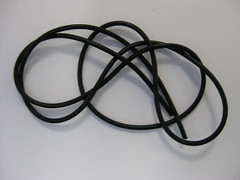
Conductive rubbers can be used for pressure, bend and stretch sensors. Because of their materiality they offer a nice haptic feedback, without the need for other squishy materials.
Stroke Sensor
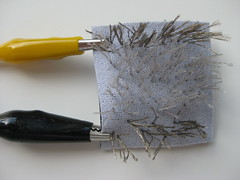
This sensor senses stroke in multiple directions. Using a technique similar to that for carpet making, conductive threads are distributed in patches and patches are connected together on the back side. Within the patches the threads are connected and when the threads of one patch make contact with the threads of another patch, this can […]
Xbee Serial Communication

The simple thing Xbee can do is to replace the serial connection wirelessly. You can do this pretty much out of the box. It is like replacing the USB cable of Arduino (serial communication) to invisible cable (wireless). Here is an example of how to set up serial wireless communication: On Arduino side, the connection […]
Headers
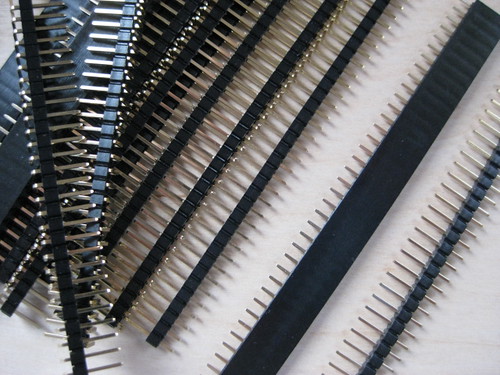
(German: Stiftleiste, Buchsenleiste) These come in very handy for making plugable connections. Though hopefully with time these will be replaced with more sewable alternatives, for now they are an okay solution. It is nice to get the break-away option, as this saves time cutting them with the knife and losing the ones in between.
Perfboard
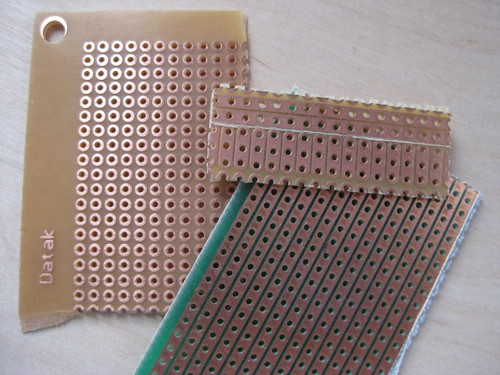
Perforated Circuit Board, also called Solderable Breadboard. An acrylic board with holes drilled every 4mm spacing for electronic components. this is also about the minimum distance for spacing when sewing with conductive thread. Perfboards with copper line patterns are great for making small circuits and then sewing to them (by hand) with thread that is […]
Conductive Paints and Inks

The biggest problem with conductive paints and inks is that they crack and loose their conductivity on fabric because the surface of fabric is porous and uneven. To print on stretch fabrics is an even bigger issue that might be resolved by combining the paints with flexible materials such as latex, silicone or fabric mediums. […]
Non-Stretchy Traces

Non-stretchy traces make very stable connections on a non-stretch fabric but make less or no sense when working with stretchy fabrics.
Fine Steel Wool

By felting together natural and steel wool it is possible to make conductive felt and from this a pressure sensitive variable resistor. This project is a nice project by Thomas Gerhardt using this principal. >> http://thomas-gerhardt.com/itp/FeltResistor/
JoySlippers

A pair of slippers for drawing, playing games and exploring alternative input. These slippers are designed with two pressure sensors embedded in each sole and can sense the weight being shifted between the toe and heel of each foot. This information is fed into a computer where a drawing application translates this analog input into […]
Wireless JoySlippers
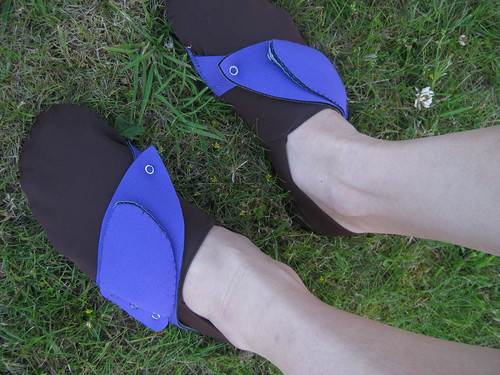
This is the wireless version of the origianally wired JoySlippers. Using Xbee Direct (Multipul Xbee – Xbee- comp) communication connection, rather than spiral telephone cable.
Sewable 3.3V Regulator
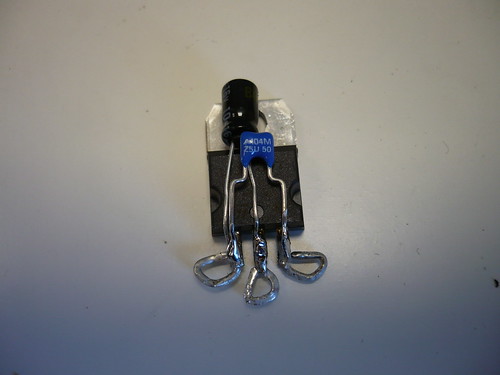
Regulators are simple and cheap way to create 5v or 3.3v (or any desired voltage if it is made for it) Often when you use a microcontrollers (i.e. Arduino) or a wireless communication module (i.e. Xbee, bluetooth), you need to supply exact voltage the device requires. This is an example of sewable 3.3v regulator and 9V battery […]
Lilypad XBee Shield

Often, we experienced “Why it does not work?!” moment, because simply connection was not good, or power was not enough. It sounds simple, but if you are using conductive fabric or thread as connection, it happens time to time. so, we made a Xbee shield (PCB) that can snap into Lilypad’s header pin so that […]
Massage my feet

>> Instructable (not yet!) >> Massage me Instructable As many people told us, and also we thought of it many times.. It will be nice if there was a Massage me foot version for foot massage. So, we finally started to make one. That is the spirit of “how to get what I want”. As […]
Puppeteer Gloves
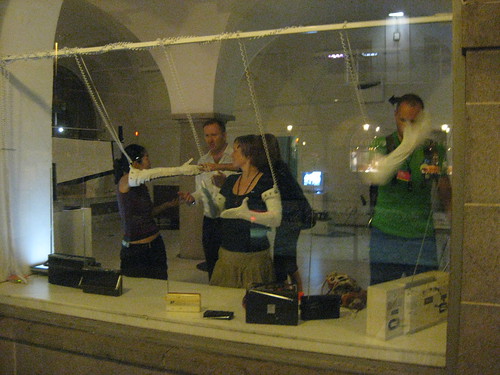
These gloves were originally made as part of the Perfect Human performance, and were exhibited separate from the performance in an exhibition space, which allowed for the audience to get a feel for how it might be to wear the whole Puppeteer Costume.
Fabric Potentiometer
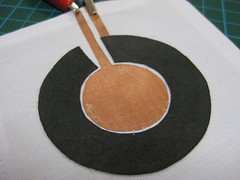
Following the same principal that you’ll find inside a traditional round and slider potentiometers. Both contain a wiper finger (conductive) and a resistive track. Normally both ends of the restive track end in separate measuring point tabs, as does the wiper finger. Thus you can choose to measure from either of the restive track tabs […]
Puppeteer Costume
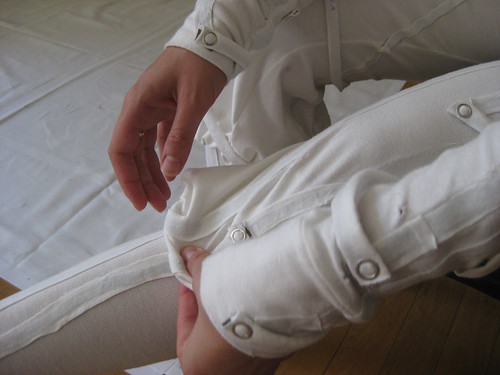
Exploring the use of affordable, off-the-shelf materials and basic techniques to create wireless motion capture wearables.
Sensitive Fingertips
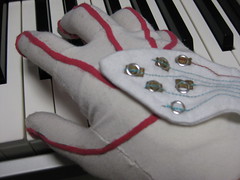
Intended for use by children and their piano teachers to visualize the difference between “p” piano (soft) and “f” forte (hard). The pressure sensitive layers of fabric in the fingertips of these gloves are stretchy so that they can fit tightly.
Tilt Sensing Bracelet
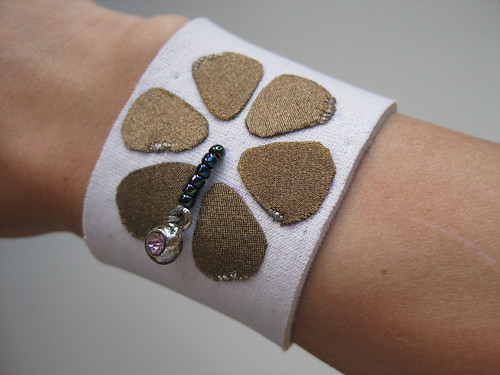
Combining beads and other decorative elements with textiles to create tilt sensitive designs. A bracelet decorated with six conductive fabric petals and a row of beads with a metal bead on the end, makes for a simple six point tilt detection. It is also designed so that the metal bead will make contact with two […]
Wireless Tilt Sensing Bracelet

Based on the wired Tilt Sensing Bracelet, this version uses Xbee Direct (Xbee-Xbee) communication connection to send the digital data from the tilt sensing bracelet to a feedback bracelet which has an LED display. LEDs light up according to where the tilt sensor is making contact.
Thin Flexible Wire
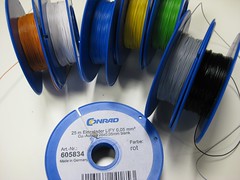
While conductive thread is so good for so many e-textile purposes, sometimes insulated wire can come in handy. Finding really thin, flexible wire is not always easy, especially when shopping online, so here are some links to some of the resources we have found useful.



